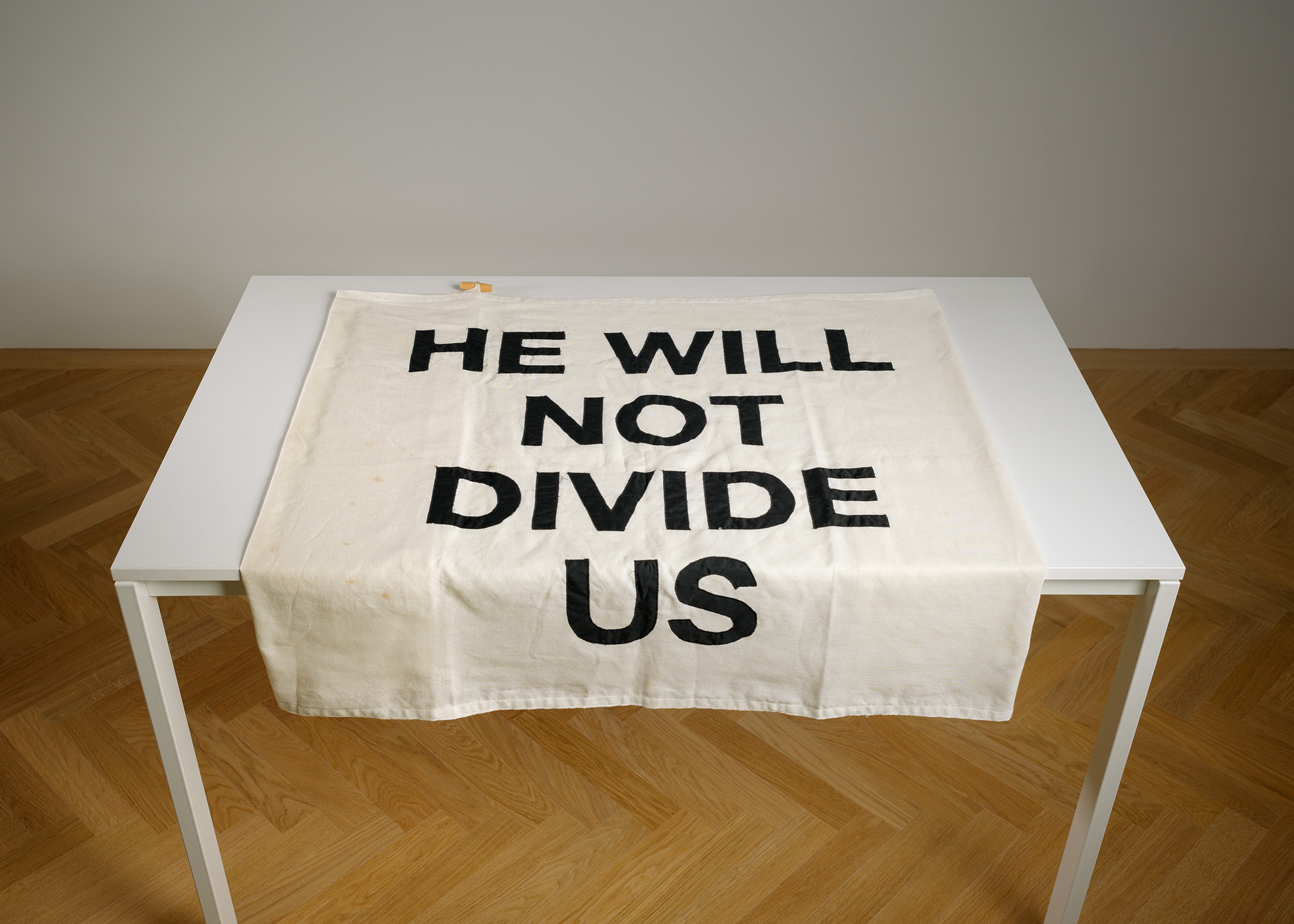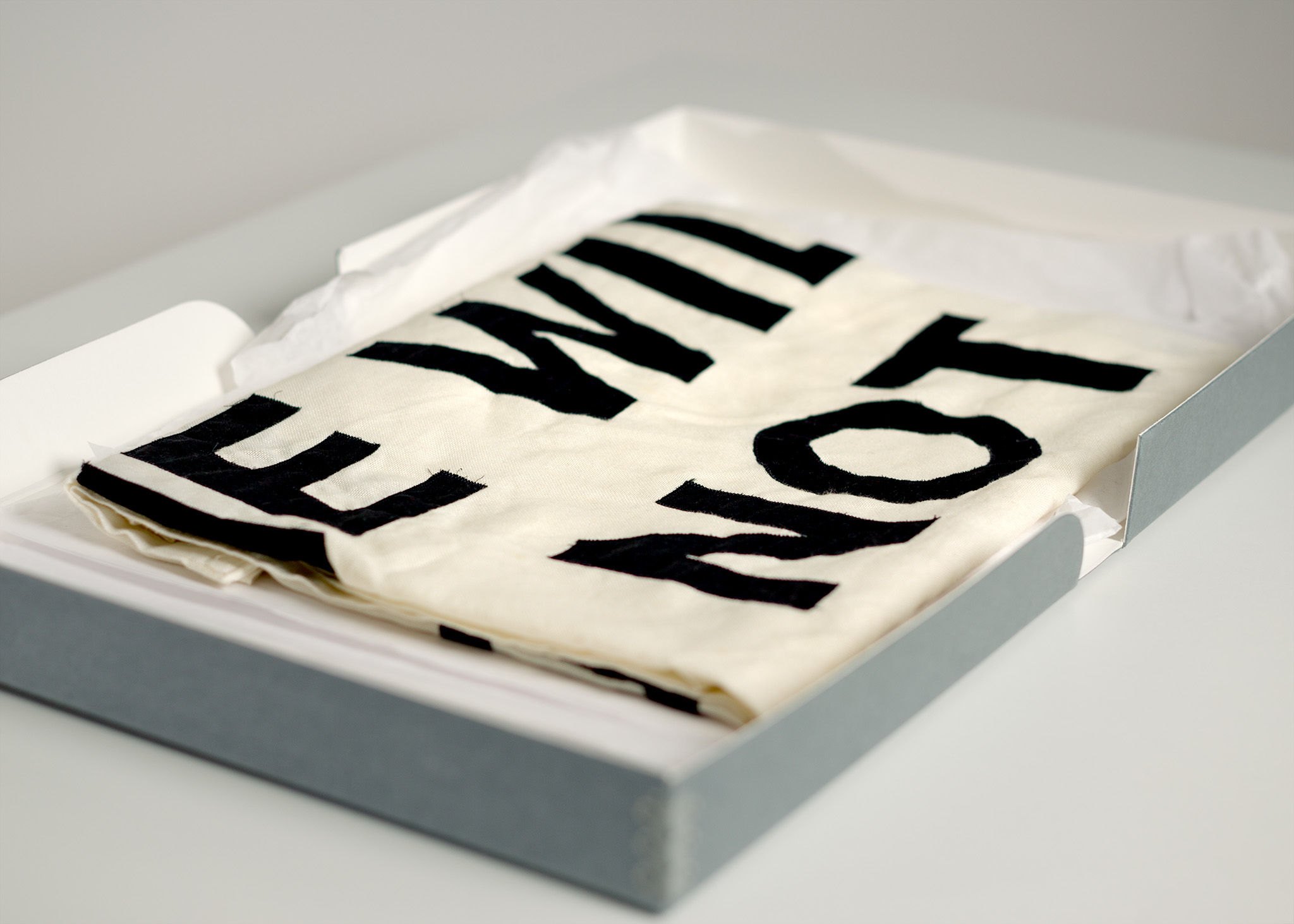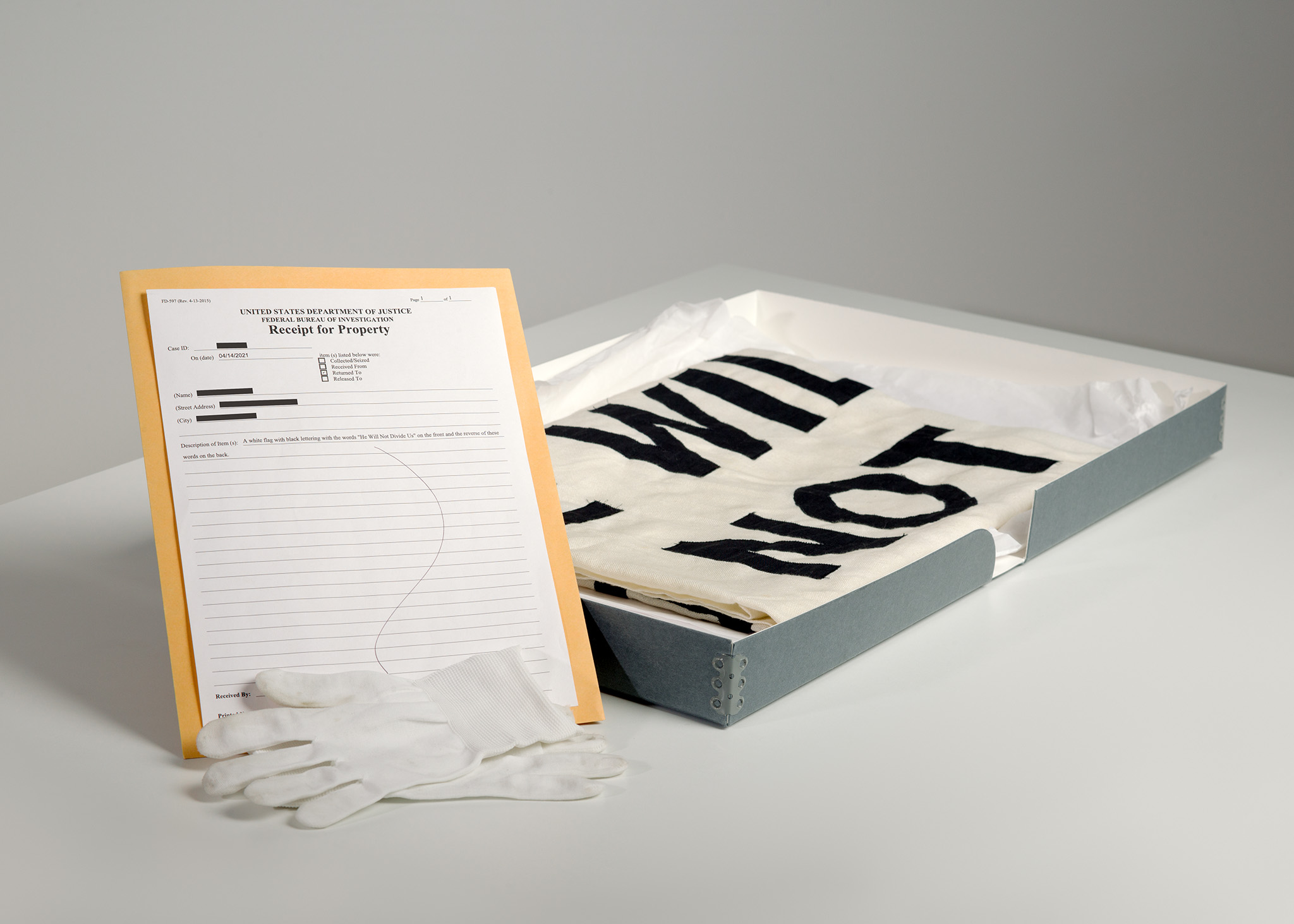[cw: Nazism, antisemitism]
After four years and one month of exhaustive efforts, my artwork, HEWILLNOTDIVIDE.US, stolen in a much-publicised midnight raid by neo-Nazis in the United States, has been recovered. This represents the final chapter of one of the most high-profile contemporary art thefts in recent years, and likely the only such crime perpetrated by organised Nazis against a Jewish artist since the 1940s.
The artwork, a flag measuring 3 x 4.5 ft, hand-sewn here in the UK, was recovered following the concerted efforts of a small but dedicated international network of anti-fascist academics, artworld professionals and members of the public who had helped to track the whereabouts of the artwork from the day of the theft. The mass of information we gathered was shared with the FBI’s specialist Art Crime Team, who had been working on the case since early 2018, and who oversaw the eventual recovery of the piece.
The wider HEWILLNOTDIVIDE.US project is a live-streamed durational artwork that ran for four years, launched with my collaborators at the time in New York on 20 January 2017, and concluding on 20 January 2021. It was created as an explicit symbol of resistance to the divisiveness of the last US presidency and the broader reactionary shifts across the globe of which this was symptomatic. Following widespread media coverage that brought the artwork to mainstream attention, it also became the target of violent attacks from the far-right, the extreme nature of which is hard to overstate, and which led to the work having to be relocated multiple times. This included numerous instances of white supremacist vandalism, more than two dozen bomb threats directed at the museum hosting it in New York, two arson attacks, the second of which was carried out by a drone at the art institution in France to which the work had been relocated, and a murder plot in which I had to be evacuated in the middle of the night by security services whilst working at another museum in Europe (which I’m unable to expand upon here).
The March 2017 raid in which the artwork was stolen from its third site at an undisclosed location in Tennessee was witnessed first-hand by myself and others as it played out, both online and offline. We were able to identify two of the perpetrators as Joseph and Maigann Hutchins, members of neo-Nazi group the Traditionalist Worker Party. The Hutchinses had gone out of their way to brag about the theft over the subsequent weeks (when not attending neo-Nazi rallies or appearing on white nationalist podcasts praising Hitler), posting multiple photographs of the stolen artwork in their possession on far-right 4chan, 8chan and Discord forums, alongside a series of messages baiting me and my colleagues, singling out my name with triple parentheses—an antisemitic signal used by the far-right to identify Jewish people. However, efforts to retrieve the artwork via the authorities initially came to nothing, and an eventual visit by local police to the Hutchinses’ home almost a year later in early 2018 drew a blank. By that stage, it seemed probable that they had passed the looted artwork on to an associate, and the chances of ever retrieving it appeared slim to none.
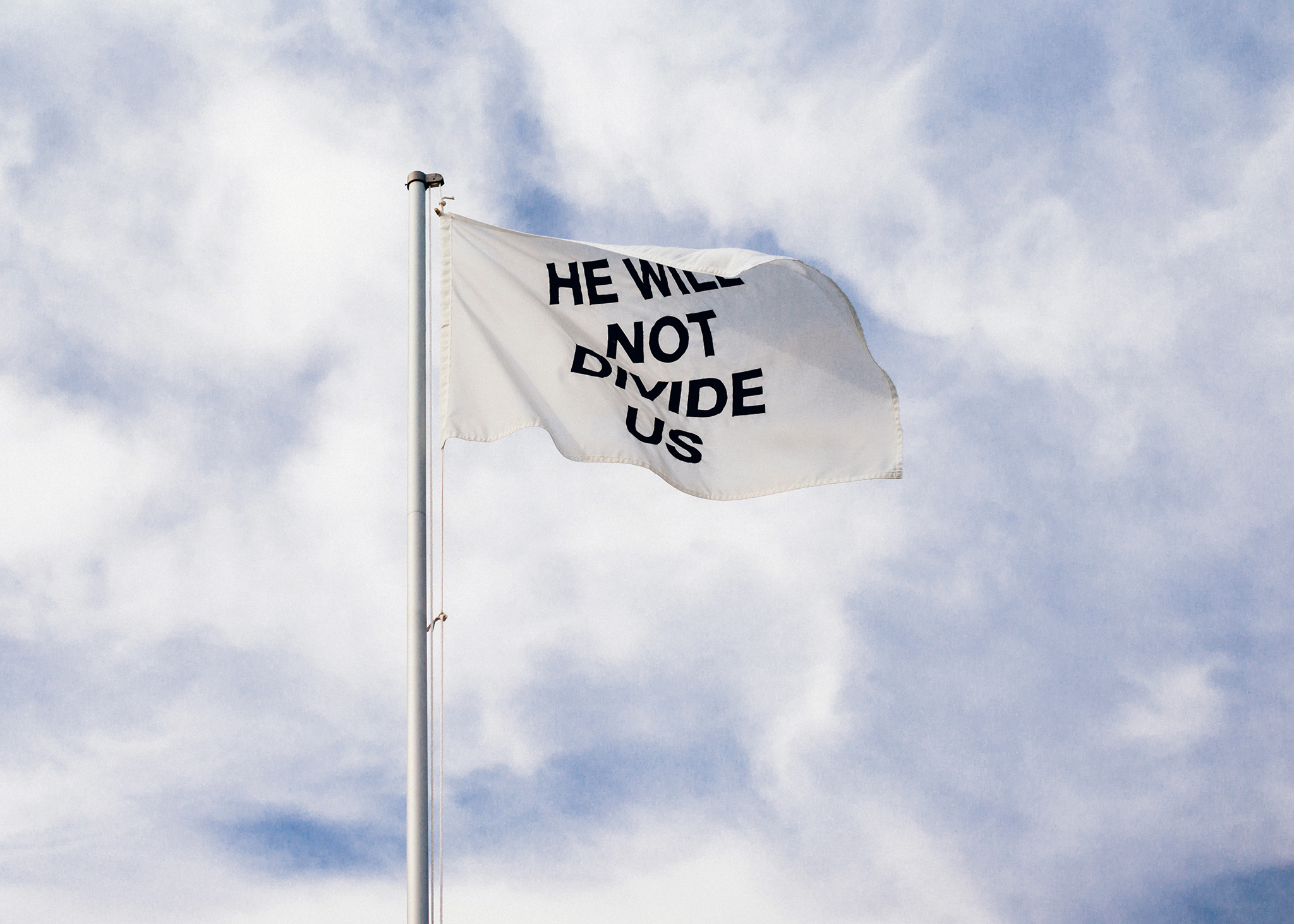
As the months and years ticked by, HEWILLNOTDIVIDE.US continued to stream from a number of different art institutions across Europe, and I continued the grim task of keeping tabs on those involved with the Hutchinses and the Traditionalist Worker Party, on the remote chance that the stolen artwork might be glimpsed again on their private social media channels, or perhaps given an outing at their next neo-Nazi rally.
Then, as 2019 drew to a close, a Facebook message pinged through from a curator friend of mine: “blugh weird to be googling images to comment and see your work with neo-nazis”, she wrote. Attached was a photograph of a man with a Nazi Totenkopf tattoo, wearing a “White Power” T-shirt, grinning in front of a flag bearing the words “He Will Not Divide Us” hanging on a wall next to a rifle. I knew instantly that this was not simply a reproduction. “wtf where is that from?” I replied, my heart thumping. “That looks like the actual stolen flag?!?!?! That’s my baby?!?!?”
The image was from a photo essay by Reuters photographer Jim Urquhart, which had been featured in the Independent under the heading: “The far-right plot to normalise white supremacy in the US”. The series depicted John Carollo, a prominent member of the by then defunct Traditionalist Worker Party, last seen alongside Joseph Hutchins and the group’s founder Matthew Heimbach engaging in violent clashes with anti-Nazi protestors at an event by alt-right leader Richard Spencer at Michigan State University in March 2018. Urquhart had followed Carollo and members of the ShieldWall Network as they burned crosses, partied on a boat with a Nazi flag, and celebrated Adolf Hitler’s birthday at their home outside Atkins, Arkansas, in front of my stolen artwork.
Since these photos had been taken, Carollo and his ShieldWall colleagues, Julian Calfy and Nicholas Holloway, had pleaded guilty to first-degree terroristic threatening, a Class D felony, after allegedly assaulting a man they had lured to their Arkansas home through the LGBTQ dating app Grindr. If Carollo had kept hold of the stolen artwork since the publication of these images, then this may just have been the breakthrough needed to secure its return. I wasted no time in passing this new information on to the FBI Art Crime Team.
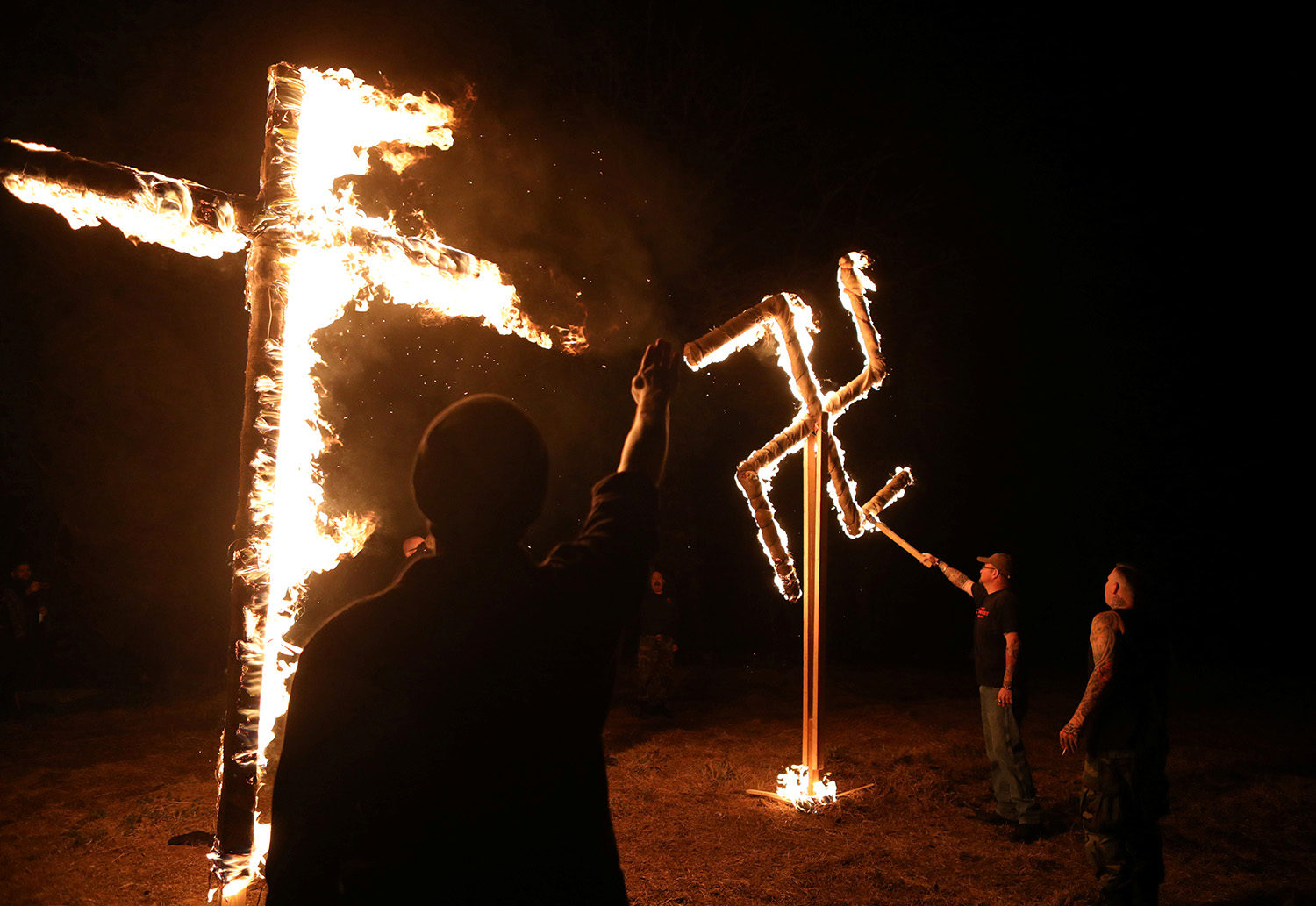
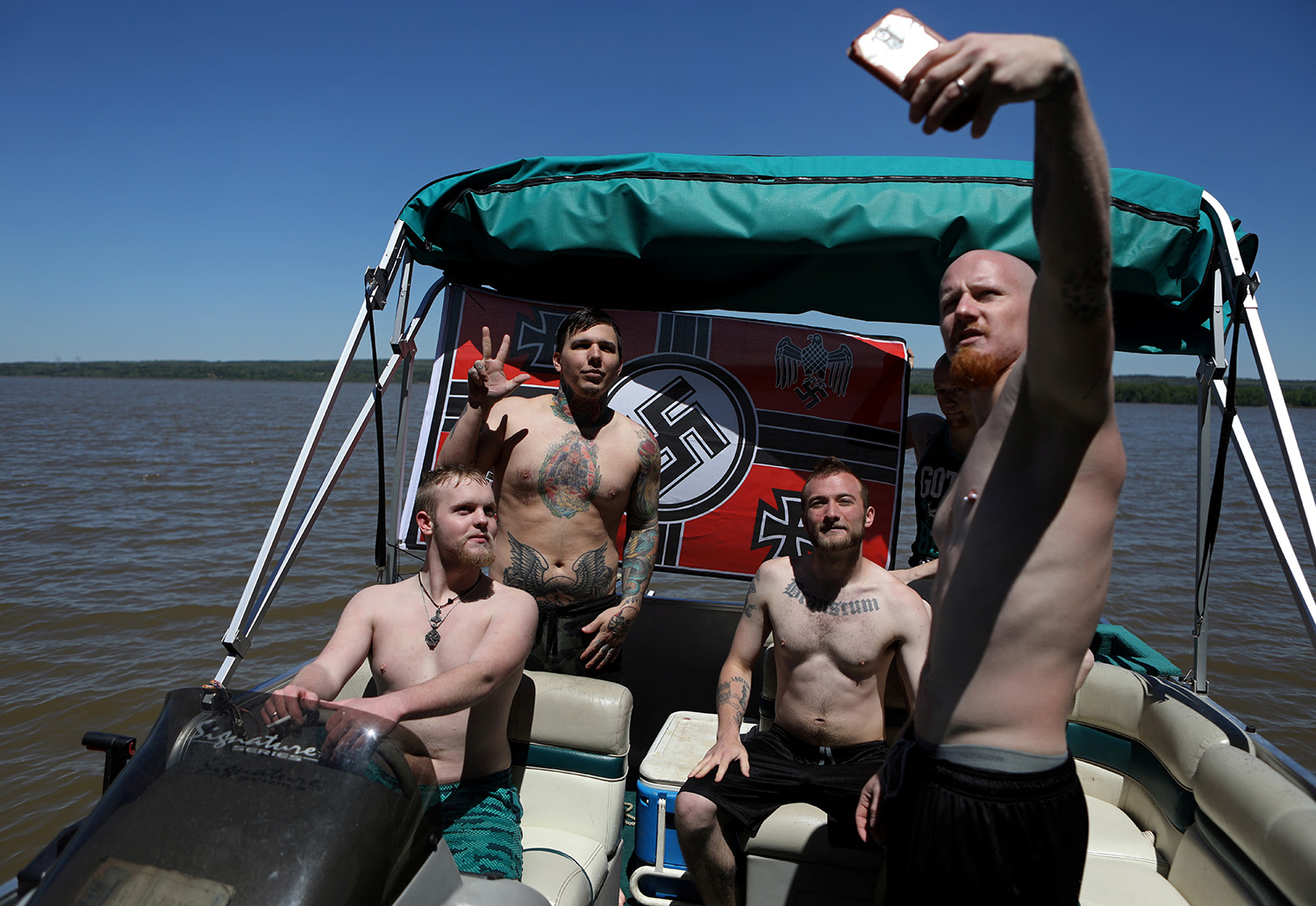
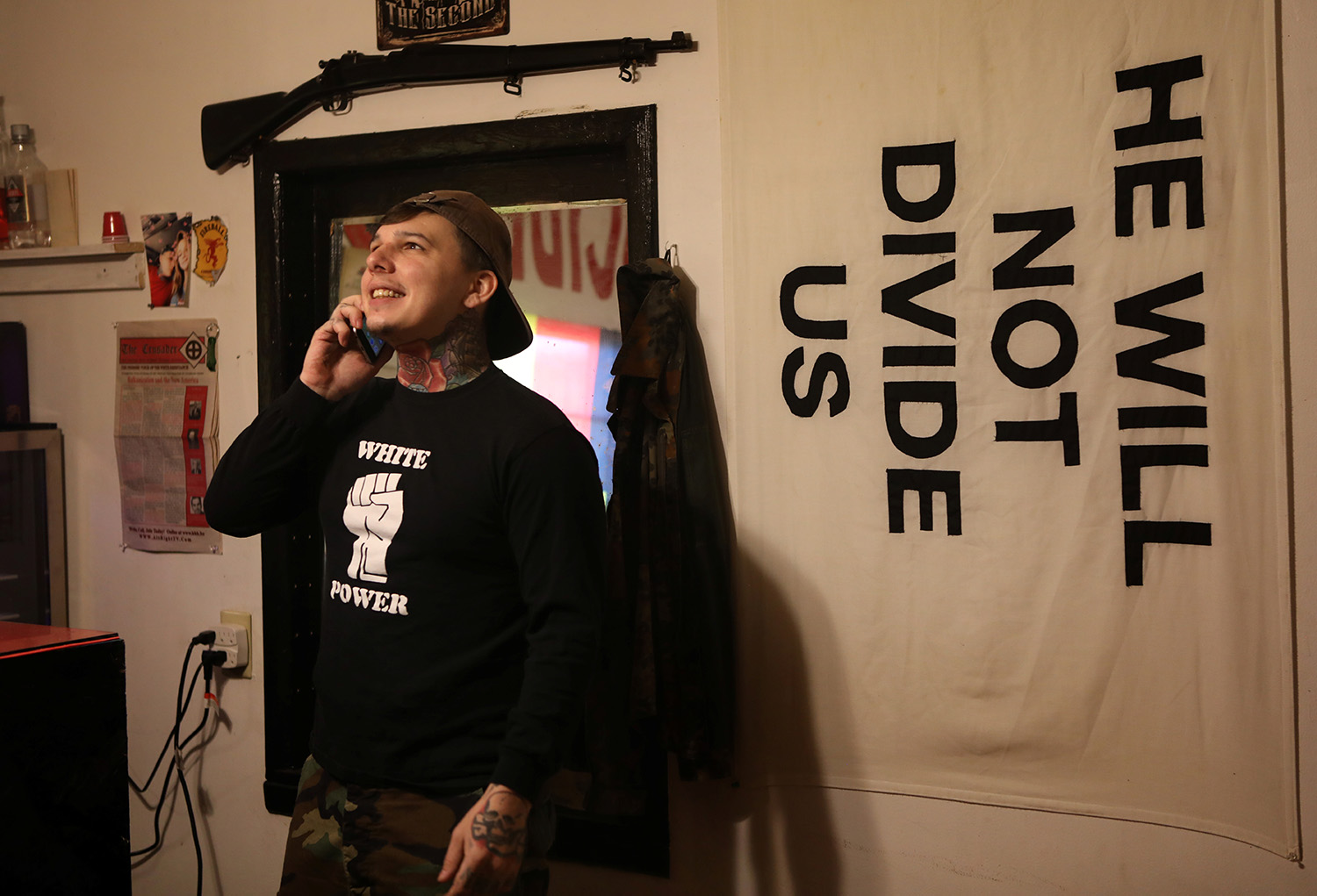
Much of the coverage at the time of the theft chose not just to ignore the nature of the attacks, but to spin the story in the very opposite direction. What was in reality part of a protracted gang-stalking campaign by a dangerously committed and obsessive neo-Nazi hate group intent on inflicting harm—perhaps the most frightening imaginable targeting to experience as a Jewish person—was framed by many as nothing more than “trolling”. The online alt-right propaganda machine had gone into overdrive, with memes of the theft immediately pumped out depicting the perpetrators as Pepe the Frog (a symbol coopted by the far-right and used as a proxy swastika). These were then promptly shared by prominent white supremacists on Twitter, including former leader of the Ku Klux Klan, David Duke. Elaborate tales originated on 4chan mythologising the raid in real-time, attributing the discovery of its undisclosed location to a complex triangulation of aeroplane contrails and cross-referenced star charts, portraying a misleading narrative of a “CIA-level operation” to track down and “capture” the artwork. What actually transpired was a brute-force attack by neo-Nazi thugs on the ground, bent on leaving no corner of the country safe for me or my artwork to exist.
In one such account, Vice described the theft as “the heist of the century”, repeating alt-right propaganda about the raid verbatim, and conveying a disturbing admiration for those responsible. A few months later, liberal WNYC show Radiolab was forced to retract an entire episode focused on the theft that aired all the same counter-factual neo-Nazi talking points glorifying the perpetrators. The hosts alarmingly summed this up as “a really encouraging story” and “comforting”, seemingly awe-struck by the 4channers’ fabled ingenuity, without pausing to consider the reality of the hate crimes, motivated squarely by antisemitism, that had been committed—not to mention the experiences of the victims, and the further danger such coverage inevitably put us in. Within days of the episode’s broadcast, I had neo-Nazis showing up on my doorstep, bearing “Kekistan” and “Smash Cultural Marxism” banners, and posting swastikas through my letterbox, emboldened by the apparent widening of the Overton Window that this type of coverage seemed to represent.
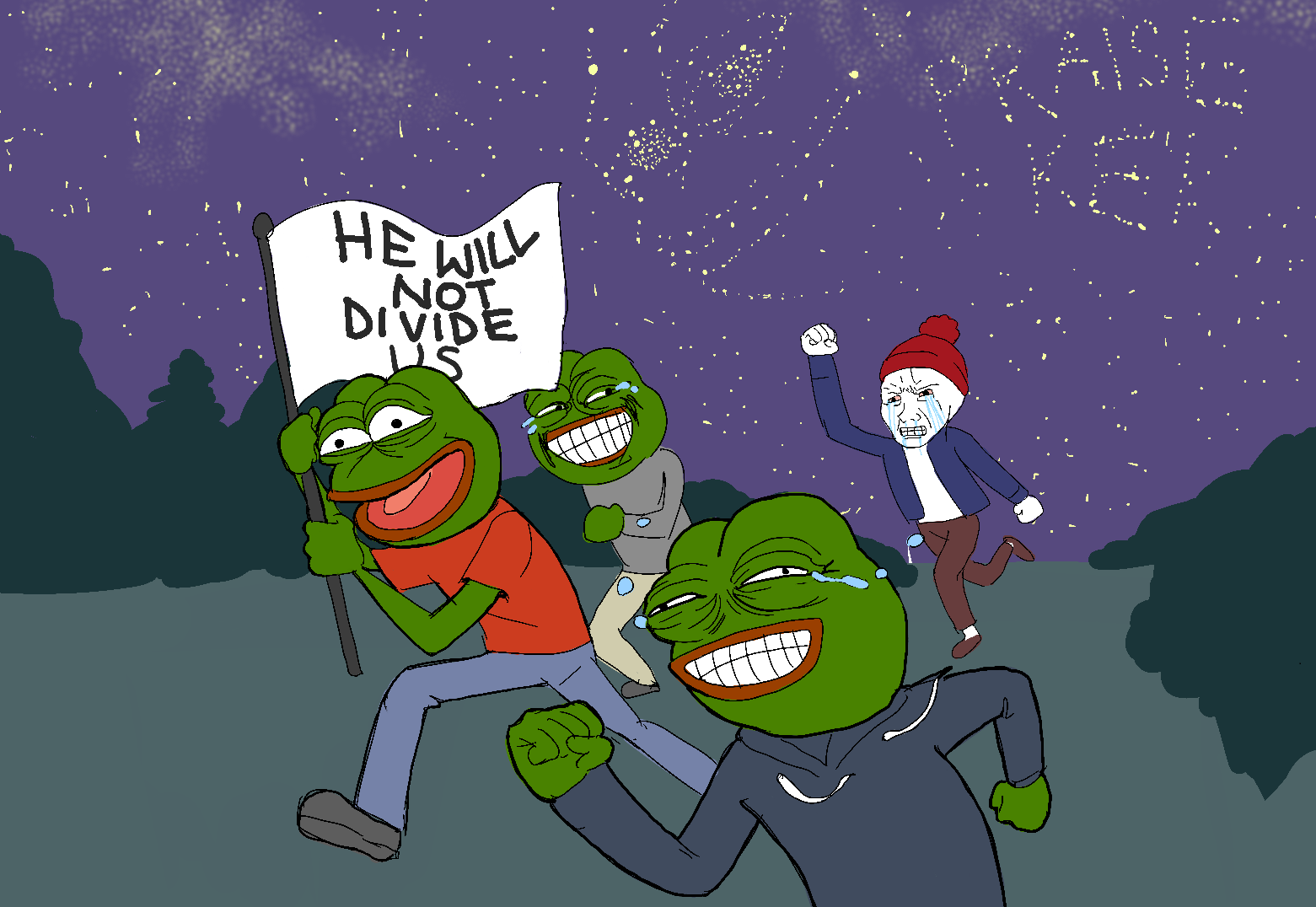
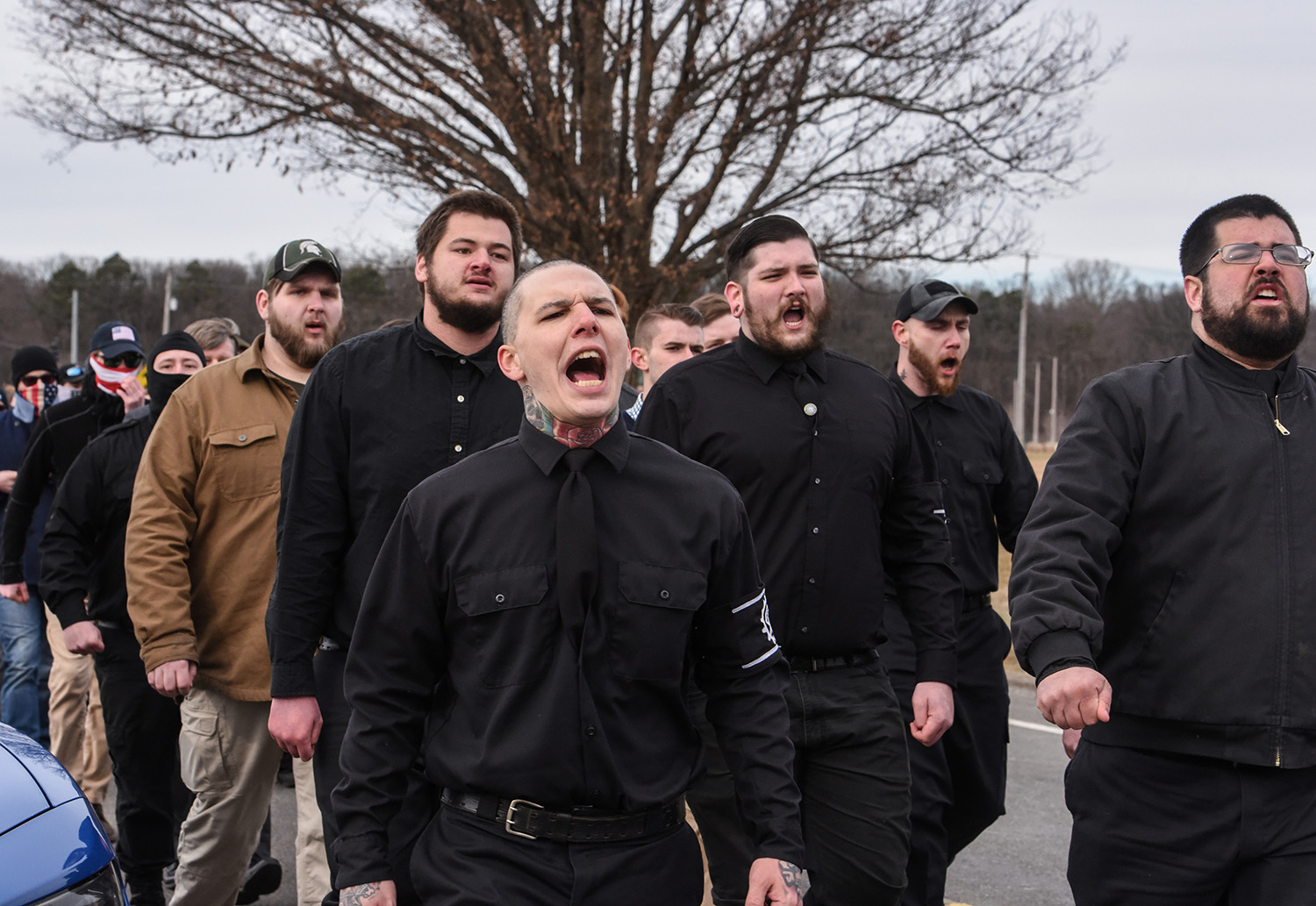
The tone of media coverage began to change after the August 2017 Charlottesville “Unite the Right” rally, in which anti-fascist protestor Heather Heyer was murdered by a white supremacist. Many of the same neo-Nazis who had been targeting me and my work over the previous months were seen there wielding torches and chanting “Jews will not replace us”—a phrase coined by one of the rally’s organisers, Identity Evropa’s Nathan Damigo earlier that year in direct response to my artwork. I even received an apology from the Radiolab hosts, who seemed genuinely aghast that they had not been able to see this bubbling up right in front of their eyes. With this, however, came a new chapter of abuse; this time, horrifyingly, from inside my own industry and an increasingly sadistic strand of the contemporary art world. A group of reactionary artists associated with the “post-internet” movement, mostly in Berlin and New York, conveniently suspended any degree of semiotic literacy to gleefully inform me that the swastikas being hurled in my direction (alongside Iron Crosses) were definitely not Nazi, but were of the “innocent” Hindu variety, and that the antisemitic alt-right Pepe memes depicting the raid were nothing more than “harmless cartoons”. The continuing neo-Nazi intimidation—which regularly saw me receive death threats, and some of the most appalling antisemitic abuse imaginable—they insisted, “never happened.” This was gaslighting on an industrial scale.
All this came to a head in December 2018, when the Walker Art Center in Minneapolis published a short “satire” about the attack written by University of California professor Benjamin H. Bratton, insinuating that the neo-Nazi theft was “arranged” by my gallery “to generate secondary publicity”. Such overt gaslighting stands as an archetypal example of antisemitism, feeding into the trope that sees Jewish people regularly portrayed as deceitful and, in a vicious circle, accused of faking or exaggerating incidents of antisemitism in order to garner sympathy, publicity, or other personal, political or financial gain.
Then, in February 2019, right-wing artist Mathieu Malouf staged an exhibition in Los Angeles with a title containing my name and an ableist slur, tailored for nobody but the most deplorable of alt-right audiences. The show centred around a grotesque antisemitic caricature of me—a sculpture with exaggerated stereotypical Jewish features and hammers and sickles for eyeballs, fists raised as if provoking an attack—harking back to the Judeo-Bolshevik posters produced by the Third Reich’s Ministry of Propaganda in the 1940s. Where the “far-right plot to normalise white supremacy” had hit something of a brick wall in the aftermath of Charlottesville, this kind of overt antisemitic baiting apparently continued to be sanctioned by factions of the reactionary art world, under the guise of creative “transgression.”
Finally, late one evening in 2020, after several weeks of radio silence, I received an email from the FBI agent handling the case, which tantalisingly read simply: “Luke, Please call me.” I immediately jumped on the phone, to be greeted with the euphoric “we’ve got it” moment I’d been waiting all this time for. Although the exact details of the operation to physically retrieve the artwork couldn’t be disclosed, and while this does not represent justice for the actions of those responsible, this was nonetheless a moment of immense catharsis, in the knowledge that what was taken from me would be returned. The pandemic saw to it that the planned handover was put on hold for several months, due to the impossibility of safely arranging the necessary in-person formal identification. Then, ironically, or perhaps appropriately for an artwork whose entire existence was tied to the presidency, it was further requested that I wait until after the November election for the artwork to be handed back, such was the political sensitivity and symbolism the piece carried, and the FBI department’s nervousness at potentially wading into a diplomatic incident. The fallout from the election, and then the Capitol Insurrection of 6 January 2021, perpetrated by some of the same white supremacists who had targeted me, seemed to delay things yet further, until the all clear was finally sounded and the artwork could be returned.
Being able to handle the flag up close once again, it’s clear that it has lived a life in those four long years. It now bears various stains and splatters, with its cord crudely slashed from the theft. But the flag has stayed intact, gleaming in its own modest way. The sentiments of the words it carries endure, unblemished by the darkest of ideologies that it has spent most of its existence in proximity to. That, for me, is the magical strength of art; the capacity for us to imbue it with shared, connective values, and its resilience and immutability in the face of those who would wish to see those values destroyed, but who will never succeed.
